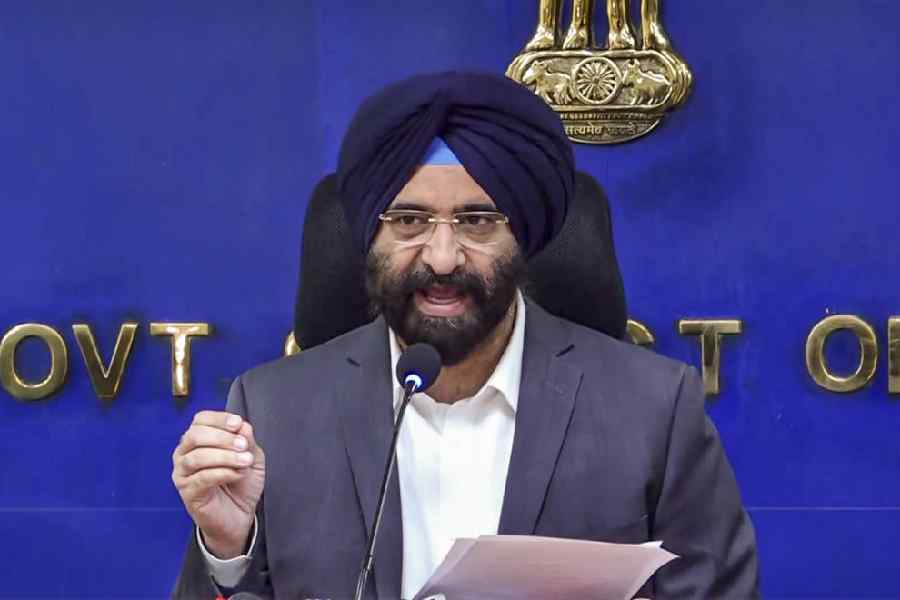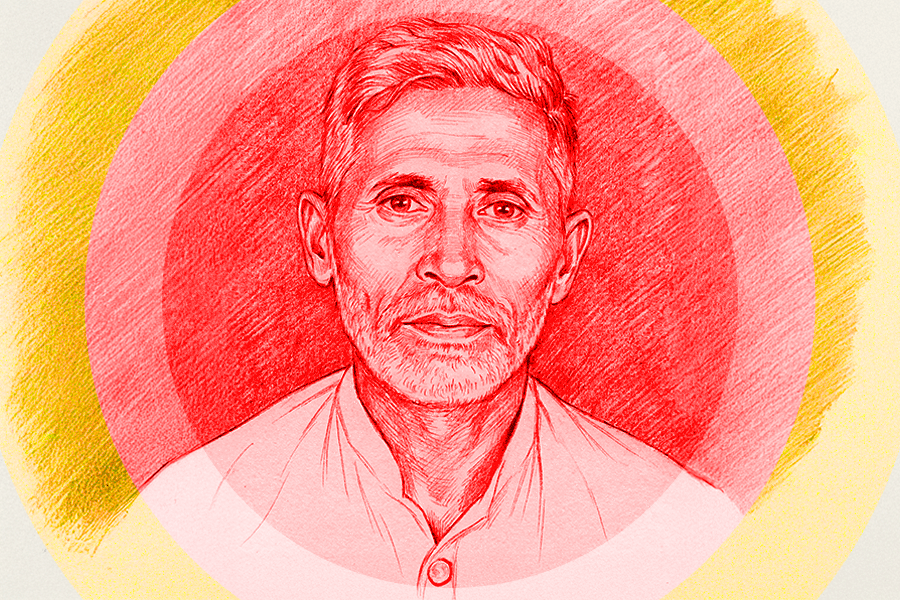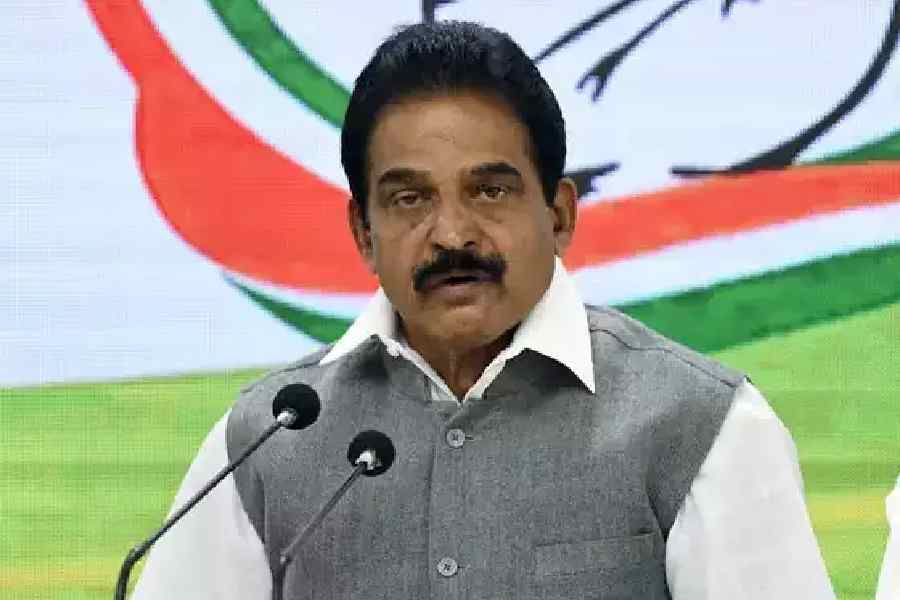|
|
After years overseas with an international organization, an economist returned home to join an important position in the ministry of finance in New Delhi. It was the mid-1950s; Chintaman Deshmukh was the finance minister. The economist, who was from Gujarat, was taken aback by a postcard from a distinguished senior citizen of his native place, Nadiad. The old patriarch was happy beyond measure that a Gujarati had joined the ministry of finance, he would now be able to channel lots and lots of funds to Gujarat, which had till then, received a raw deal from that wretched Maharashtrian, Deshmukh.
The oldster was known as an upright person. He was involved in many welfare activities, had sponsored a successful milk cooperative, was chairperson of the governing body of the local college and was widely respected for his generosity and helpfulness. His ethos was utterly sincere even if doggedly traditional. Was not someone from a village, who had succeeded in life, set up a flourishing legal or medical practice in the state capital or risen high in government service and built an imposing mansion in the city, always expected to keep open house for his relatives, friends and neighbours from the village? They would be in the city perhaps to pursue further studies or for medical treatment or to file a legal suit or in search of work. It was accepted social code that one making good in life should help, by whatever means possible, his kinfolk. If it were in his power to wangle a job for a needy young man from his village, was he not morally obliged to do so? For the patriarch from Nadiad, a son of Gujarat, installed in a key slot in the ministry of finance, was bound to arrange extra resources for Gujarat. The concept of conflict of interest would have sounded altogether foreign to him.
The colonial times saw the full flowering of this ethos, which defined an entrenched agrarian culture. Somebody from a middle-class background lucky enough to get promoted as burra baboo in a managing agency firm lost no time in filling the posts of petty clerks within his beat with his near and dear ones. Such gestures would be accorded tacit social approval; it was as if the individual was redeeming his debt to his extended family which had helped him get established in life. The expression ‘nepotism’ was yet to gain currency. Fellow-feeling — identity of interest with those around — was what mattered. It was extremely low-level economic equilibrium; a stagnant agriculture — at that point the prime source of national income — fostered a stagnancy of the mind. What is elliptically referred to as modernization was a lugubrious process, there was not that degree of competition for people to avail themselves of urban opportunities, the formidable head clerk had little trouble in crowding the office with members of his clan. Similar things happened within government precincts; a deputy collector and magistrate or a subordinate judge — the highest rung of the ladder an Indian could ordinarily aspire to reach — would consider it his bounden duty to get poor relatives or acquaintances selected as kanungos, muharirs or sheristadars. This mirrored the social conscience of the day. Many private banks, for instance, crashed because they thought nothing of making generous advances to either members of the family floating the enterprise or to close friends that in the end went unrequited.
Such a state of affairs continued more or less till the advent of independence. During the acute depression of the 1930s, a swelling of urban unemployment led to stray protests against reported instances of nepotism in public appointments. But it did not assume a serious form; a provincial chief minister (then designated as premier) could even brazen it out by claiming ‘helplessness’ since all his nephews, who had landed cushy government jobs, happened to be brilliant. The private sector, though, was yet unaffected by ramblings of nepotism-induced discontent.
Individuals attaining positions of influence or in business did not have to suffer in those times from the agony of the private interest-public interest divide. They considered themselves to be men of purpose, intent on using their position to further what they regarded as public interest. The public to them was made up of those who constituted their immediate world — their kith and kin and men and women in their village or taluka; the rest of the universe was beyond their horizon of awareness. With their public world indistinguishable from their private world, there was no question in their mind on any possible conflict of interest.
Time past continues to haunt time present. The ambience has changed, a century or more has elapsed, the mindset of quite a few, nonetheless, is stuck in the feudal-colonial mould. A young politician of relatively humble circumstances catches the eye of the scouts of a corporate group. They submit a favourable report, and the corporate entity decides to invest in him. It finances his election campaigns, allows him some benami shares, arranges to transfer the ownership of an apartment in a highrise in Mumbai or Calcutta in the name of his daughter, subsidizes his travels overseas so that he can broaden his mind. The up and coming politician is naturally beholden to the corporate house and thinks no end of it. In course of time, he becomes a junior minister at the Centre and uses his position to do little and not-so-little favours for the business group to which he owes so much: once installed in a ministerial slot, there are ways and ways to advance, on the sly, the interests of one’s favourite corporate body, such as pass on some inside information that enables it to submit the lowest tender for a government contract, or adjust the rate of excise duty on a range of commodities the group has a stake in. The minister travels fast along the learning curve and soon gets to know how to cut awkward corners; he grows bolder too. His closeness to the particular corporate entity is soon a staple of market gossip; that hardly bothers him. He has worked out the moral issue in his mind. Is it not in the line of one’s duty to help those who had helped you? The minister- politician is firm in his belief that the corporate house he has such intimate links with is doing great work in its sphere of activity and making outstanding contributions to the country’s cause. No need, he reasons, to worry over the supposed distinction between public interest and private interest: the two converge.
Arrives the season for putting together a new government. The particular industry or business group has by now acquired enough clout to lobby with the highest political circles and ensure that its man not only gets a place in the new cabinet, but is also allotted a portfolio most strategic to its interests. The sequel is the torrent of so-called scams that are currently keeping the comptroller and auditor general, the Supreme Court and the media engaged. The corporate group, armed with a franchise obtained amazingly easily, extracts, with nonchalance, natural resources from regions into which it is not supposed to intrude. It fudges its capital expenditure to bloat the estimates of cost and thereby further fleece consumers. It gets away with these acts because the presiding minister is its nominee in the cabinet.
Crude people may call this corruption; private interest has, in their view, made mincemeat of public interest. Advocates on behalf of the minister and the corporate body will differ. The problem, they will explain, is on account of a clash of cultures, the new-fangled doctrine of conflict of interest is having a confrontation with the age-old concept of the indivisibility of private and public welfares. Is it not hoary Indian convention to take care of one’s kith and kin once one has arrived where he has — is not such conduct obligatory for a true Indian worth his salt? Is it a crime to be loyal, to an entity which is doing such wonderful things to transform the face of India? Why then is the hullabaloo?
Proponents of the identity-of-interest theory will proceed further. What is taking place in India is no different, from what is happening in the great United States of America itself. According to a recent revelation, ever since 2008, when the frightening economic meltdown began, the Federal Reserve Board, the central bank of that country, has secretly advanced funds to the extent of a whopping 16 trillion dollars to a select number of banks and corporations; several officials of the Fed happen to be on the executive boards of these banks and corporate bodies. Not one question was raised over conflict of interests: munificence, so to say, was internalized.
There is a meeting ground, it will be thunderously claimed, between the old Indian value system and contemporary American practice. Conflict of interest is bunkum, corruption is illusion. Allegations of corruption of other kinds being talked of must also be based on similar misunderstanding. But some people are beyond reason; they still threaten to exercise — what rubbish — their ‘democratic’ rights and protest against corruption. The poor government has no option but to detain them. These detentions draw inexplicably huge crowds out in the streets. The country has indeed gone to the dogs.












